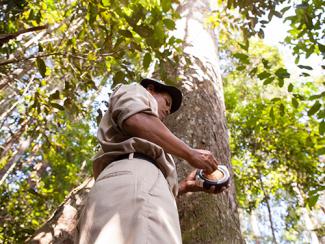To satisfy the requirements of Sections 118(f) and 119(h) of Part I of Public Law 87-195, the Foreign Assistance Act of 1961 (FAA), as amended, the U.S. Agency for International Development (USAID) submits this report on our programming to preserve forests and biodiversity during Fiscal Year (FY) 2019.
At its core, conservation is development. Sound stewardship of natural resources is essential to the Journey to Self-Reliance in USAID’s partner countries. By promoting development that benefits both people and nature, our activities to conserve biodiversity strengthen the capacity of governments, civil society, communities, and the private sector to manage natural resources, increase resilience, and deliver development results across sectors. Global investments in the conservation of biodiversity and the sound management of natural resources also provide essential benefits, such as clean water, food, crop-pollination, and the control of pests and diseases. In addition, intact forests deliver a wealth of benefits, including food, medicine, and livelihoods, to people around the world.
However, nature, and the benefits people derive from it, are under threat worldwide. In the past 50 years, more than 60 percent of wildlife populations have disappeared. The loss and degradation of habitat account for almost half of this disappearance. Reductions in biodiversity also increase the risk of disease and poor nutrition, especially in the most-vulnerable communities.
To tackle these global challenges in FY 2019, USAID worked in nearly 60 countries to foster the sustainable and inclusive management of natural resources. USAID-funded programs collaborate and engage across sectors to promote the health, prosperity, resilience, and security of local communities, particularly the most vulnerable; improve citizen-responsive governance; empower women and girls; and apply technology and learning to enhance development practice.
Also in Fiscal Year (FY) 2019, President Trump announced the U.S. Government’s commitment to the One Trillion Trees Initiative, which aligns with USAID’s long-term work to protect, restore, and manage forests while reducing poverty and improving lives. USAID has a significant leadership role to play in the international component of this initiative.

